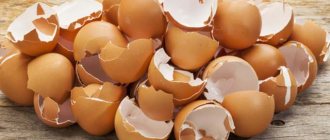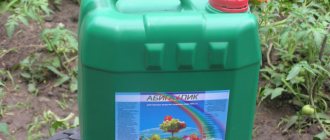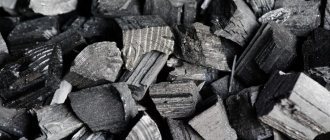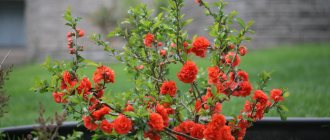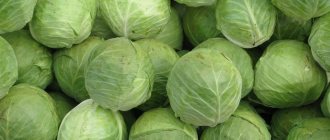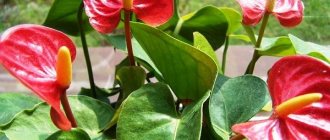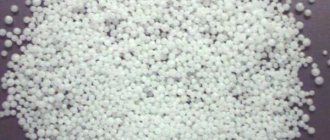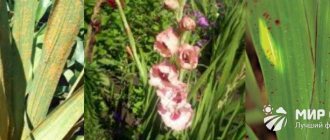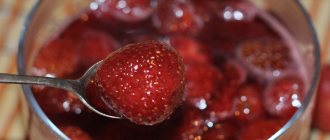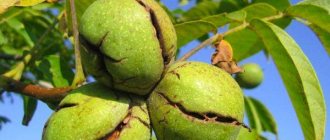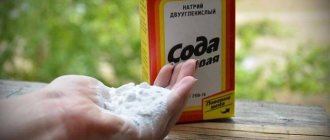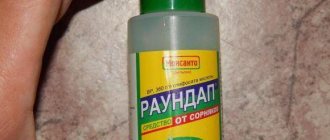Ammonia - as a fertilizer in the garden
Nitrogen, as a chemical element, is extremely important for the development and growth of plants, especially at the beginning of the growing season. It affects all vital processes in the plant - nutrition and metabolism. It is an important component of cells, amino acids, chlorophyll, plant hormones, and vitamins. And at the beginning of development, a young plant especially needs nitrogen. Special nitrogen compounds are necessary for good growth of seedlings and leaves. Plants that receive enough nitrogen have beautiful green leaves and develop better. Over time, the need for this microelement decreases, and phosphorus-potassium fertilizers come to the fore.
The role of nitrogen is that it directly affects the quality and quantity of the crop. Judge for yourself, you are unlikely to get a good harvest from a bad and stunted plant. Therefore, starting from early spring, it is necessary to worry about what the harvest will be like by autumn. And if for some reason you cannot provide fertilizing with organic or mineral nitrogen fertilizers, ammonia will come to your aid.
The pungent odor of ammonia is extremely unpleasant for pests. Therefore, aqueous solutions will help get rid of such malicious insects as aphids, secretive proboscis, ants that carry aphids, as well as mole crickets, Colorado potato beetles, etc.
However, caution must be exercised when working with ammonia solutions. Since this is a toxic volatile substance, when inhaled, the product causes severe irritation and even burns of the mucous membranes; it is necessary to work with it in respirators or in the open air. Remember also that this is an explosive substance and should only be diluted away from open sources of fire.
Using ammonia for feeding onions and garlic
Signs of nitrogen deficiency in onions and garlic are yellowing of their leaves. This happens for the following reasons:
- Consequences of return frosts,
- Lack of nutrition (nitrogen),
- The presence of pests, of which there are a lot of onion plants, but most often it is the onion fly.
If the leaves of onions or garlic turn yellow from frost, you can revive them with the help of anti-stress drugs - Zircon, Epin or hydrogen peroxide.
The lack of nitrogen can be compensated by fertilizing with green fertilizer or urea. Usually by this time there are already nettles and weeds, and it is quite possible to prepare a nutritious fertilizer from them. But if this is not possible, use an ammonia solution. But remember that nitrogen fertilizing should be used when the ambient temperature rises above +10ºС, otherwise the absorption of nutrients simply will not occur.
Fertilizing is carried out using a calculation prepared at the rate of 2 tbsp. l. for 10 liters of water. They feed only on wet soil, that is, it is necessary to first water the beds with plain water, and only after that water the leaves with a diluted solution. Or they do it after it rains.
Simultaneously with fertilizing, pest control is carried out, of which there are a lot of onions. The most malicious of them are the onion fly and the secretive proboscis. It is best to plant onions (sets) in late autumn before winter. In the spring, the onion puts out feathers early, its root system quickly develops, so by the time of summer the onion fly does not have the opportunity to lay larvae at the bottom of the onion. For preventive purposes, water the beds well with ammonia solution. For this, 2 tbsp. l. diluted in 10 liters of water and watered over the bush. Treatment must be carried out at least 3 times with an interval of 10 days.
Pest control measures
Pest control with ammonia is carried out in different ways. Much depends on the type of insect. Hence the recipe options:
- Ammonia for mole crickets is used for prevention purposes. The insect visits seedlings and already ripened cabbage. If the treatment is carried out in a timely manner, the crop will not be affected. Root watering. Solution: 10 ml 25% +5-7 liters. Pour 0.5 liters into the hole before planting. This option is needed for wireworms on the nightshade species.
- In the fight against aphids, ants, wasps, watering is done twice (14 days after the first watering). A solution of ammonia with water in the following proportions: 25 ml + 7 liters of water + laundry soap. The same method is suitable for spraying onions against the secretive proboscis.
- In the garden or in the garden, ammonia gets rid of flies (onion and carrot). Mix 25% ammonia (5 ml) in a bucket of water. One time.
- To eliminate weevils, use a 25% solution per bucket of water. 50 ml required.
How to use ammonia against pests on cabbage
The worst pests on cabbage when it begins to form heads are slugs. These land gastropods feed only on juicy young parts of plants; they love cabbage and strawberries. It breeds especially a lot in damp and rainy summers. They can not only destroy the crop, but also introduce viruses and bacteria. There are many methods of fighting slugs, but here I want to pay attention to treatments using ammonia.
To adjust the working solution, add 1 tsp to 1 liter of water. ammonia solution. Stir and treat the cabbage with the resulting solution, trying to spray them on the top and underside of the leaves. Repeated treatments are carried out no earlier than 10 days later, 2 more times. Don't forget to sprinkle the soil around the heads with wood ash or eggshells. Slugs will not be able to crawl through them without injuring their tender bellies. This will also scare them away.
Ammonia is unlikely to help as a top dressing, since at the moment the heads are set, it will no longer be so relevant.
Using ammonia for strawberries
I have already told you how to care for strawberries in early spring. But I want to draw attention to feeding and treatment against pests, primarily against the strawberry weevil using ammonia.
One of the sources said that strawberries absorb nitrogen poorly. But as a preventative against weevils, ants and slugs, ammonia solution is simply not replaceable. Moreover, the treatment is carried out on mulch, since it, especially mown grass, can also contain pests. The working solution is prepared at the rate of 2 tbsp. l. 10% ammonia solution per 10 liters of water, mix well and water the bed completely. A bed 5 meters long should require at least 10 liters of solution. Strawberries are processed on damp soil after watering or rain.
It is not recommended to feed and treat strawberries for pests during flowering and fruiting. But after harvesting the bushes, you can carry out another feeding.
Feeding seedlings of tomatoes, cucumbers and peppers with ammonia
When planting seedlings of tomatoes, cucumbers and peppers in an unheated greenhouse, even one made of polycarbonate, she experiences severe stress when the threat of return frosts arises. At low night temperatures, nitrogen from the soil cannot be absorbed by plants, so they are stunted in growth and their leaves turn yellow. Therefore, as soon as the weather settles and the threat of frost disappears, the plants in the greenhouse must be urgently fed. And the first nitrogen fertilizing is best done by spraying with an ammonia solution.
Already after the first feeding, you will notice a transformation of the plants: the leaves will acquire a rich green color, and active growth of the plant will begin. This feeding gives a strong impetus to the growth and development of the plant. In addition, this is an excellent remedy for pests, of which there are quite a few in the greenhouse. These are aphids, root-knot nematodes, tobacco thrips, woodlice and slugs, etc.
For the first feeding, dilute 2 tbsp. l. ammonia solution per 10 liters of water, if using a 10% solution, and 1 tbsp. l., if the concentration of the original drug is 25%. Stir the working solution well and water it over the damp soil with the diluted solution at the rate of 1 liter for each bush.
In total, at the beginning of the growing season, you need to carry out 2-3 feedings, but before flowering and fruiting begin. You shouldn’t get carried away with this type of feeding either, otherwise the plants will become fatty and all the energy will be spent on the growth of the tops. Do not forget to fertilize with potassium fertilizers 10-12 days after nitrogen fertilizing.
How to use it to feed plants?
The popularity of ammonia is growing every year. Starting with raising seedlings. Some experienced gardeners use it year-round in greenhouses. Compliance with the recipe is an important part, but manipulation is not the last thing.
Cucumbers and tomatoes
For growing tomatoes and cucumbers, ammonia is useful from the moment of planting and growing seedlings. It is a fungal prevention and promotes rapid development.
It is a proven fact that the susceptibility of vegetable crops decreases if fertilizing with ammonia is carried out at the seedling stage. So tomatoes and cucumbers are less susceptible to infection with powdery and downy mildew. Plants will suffer 5 times less from late blight.
Summer residents believe that by fertilizing cucumbers and tomatoes with ammonia, the appearance of barren flowers is reduced. The ovaries increase, growth activity doubles.
How to dilute ammonia from pests
Aphids are a terrible evil for almost all plants in the garden. There are about 1.5 thousand representatives of a dangerous pest that can ruin the entire harvest of currants, gooseberries, apple trees, cherries, strawberries, grapes, many vegetables (cabbage, cucumbers, carrots, tomatoes) and flower crops (roses, clematis) and many others crops
Insects feed on the sap of young leaves and shoots, causing their dehydration and subsequent death. A sweet sticky coating appears on the leaves, causing fungal infections. In addition, this plaque attracts ants, which then become carriers of fungal infections and the same aphids.
Sometimes gardeners have to make a lot of effort to get rid of both aphids and ants. One way to combat them is to spray with a solution of ammonia. To do this, as soon as the snow melts, before flowering begins, you need to generously spray the plants with the following composition:
- liquid green soap - 3 tbsp. l.,
- 10% ammonia solution – 1.5-2 tbsp. l.
Mix the ingredients and spray the leaves very generously on all sides using a fine spray, literally washing off the insects. Carry out the treatment every 1.5-2 weeks 3 times. Have time to do this before the plants start flowering.
And for ants, make a mixture of green soap, vinegar and vegetable oil, and pour this mixture onto the soil around the bushes and trees.
Fighting mole crickets with ammonia is an old, proven method. The principle of operation is that the pest does not tolerate strong odors and leaves these places. To prepare the solution, dissolve 3 tbsp in 10 liters of water. l. 10% ammonia solution (or 10 ml). The working solution is watered between the rows. The dosage must be strictly observed, otherwise the plant itself can be harmed.
You can moisten rags with a concentrated (10%) solution and stick them into the passages where the mole cricket lives. And so that the smell does not dissipate for a long time, the rags can be put in a plastic bag, pierced several holes in it and placed in the tunnels.
Reviews
It is recommended to read real reviews to understand whether ammonia actually allows you to cope with pests and provide high-quality fertilizing:
- Vladislav, 46 years old, Vladivostok: Using an aqueous solution of ammonia in the garden is probably one of the oldest methods of protection against pests, as well as for fertilizer. The problem is especially common with ants and mole crickets. A solution with a pungent odor allows you to get rid of crop damage by pests. I also use a weak concentrated solution for preventive treatment.
- Valeria, 34 years old, Krasnodar region: For any summer resident, it is extremely important to take care not only of soil fertility and the quality of the crop, but also of the safety of their crops. The simplest, most accessible, but effective method is ammonia. By properly dissolving concentrated ammonia, you can get rid of problems such as yellowed leaves, poor harvest, and damage to crops by pests.
It is also worth noting the cost-effectiveness of this method. Especially compared to expensive fertilizers and protective agents. But the main thing not to forget is that you need to prepare the ammonia solution in the open air, otherwise you can get poisoned by carrying out the procedure indoors. Mustard cake helps get rid of many pests.
- Egor, 52 years old, Kaliningrad: Ammonia can truly be called a universal remedy used for gardening. With its help, it is possible to get rid of not only harmful insects, but also moles and birds.
People's advice, proven over the years, is still relevant in modern times. Experienced gardeners and gardeners trust inexpensive but effective methods of feeding plants and protecting them from insects, based on the use of ammonia. But it is recommended to strictly follow all described methods for preparing and using solutions. A too aggressive mixture may not help, but do harm.
